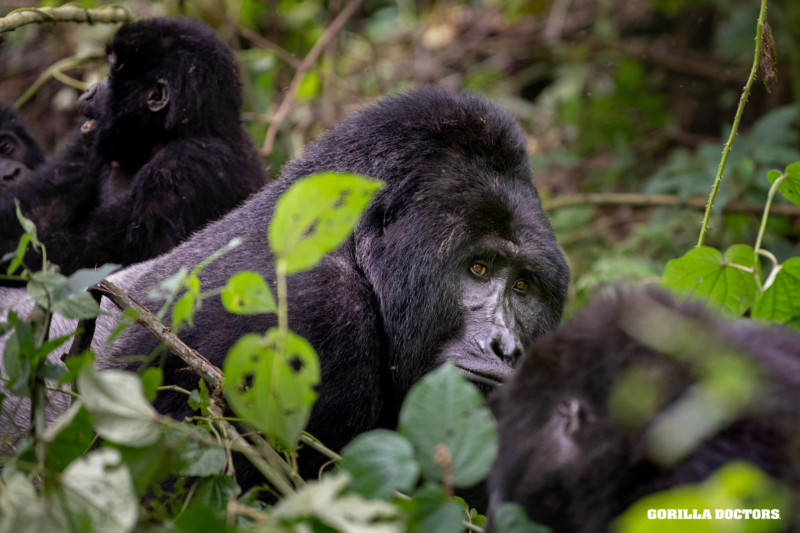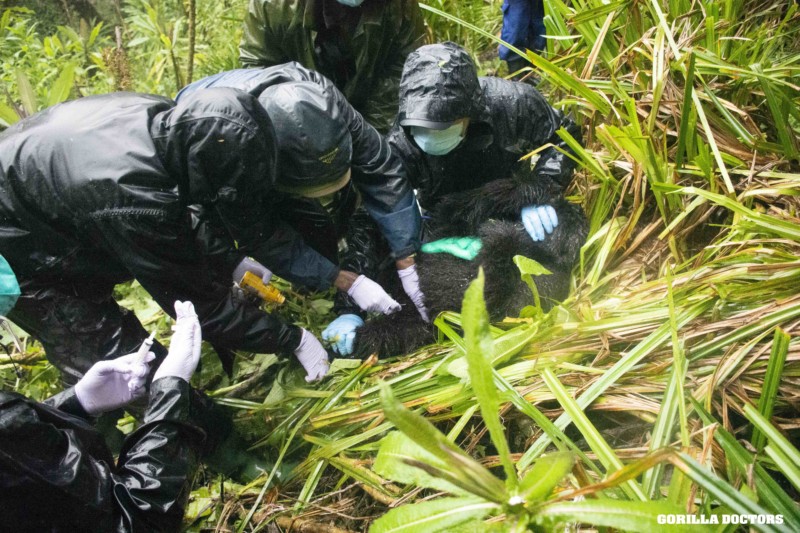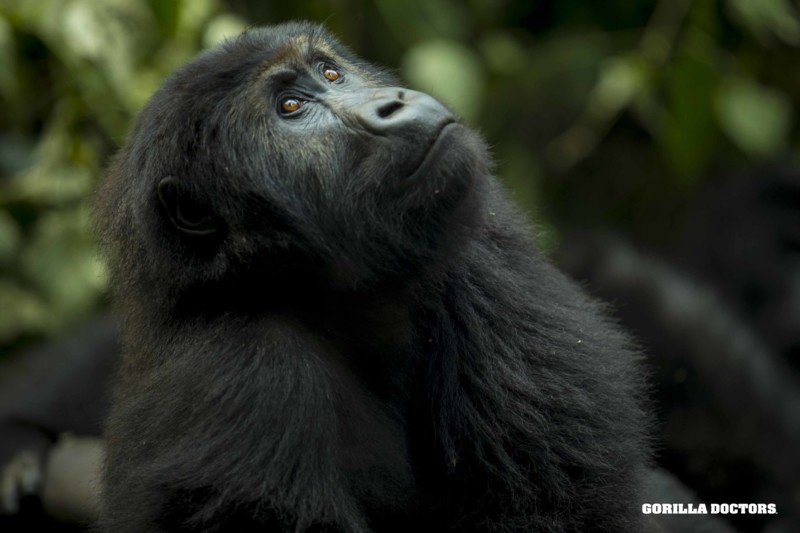Did you Know (Part 2 of 4): Keeping Gorillas Healthy Everyday
By Gorilla Doctors Staff on Wednesday, April 22nd, 2020 in Blog.34…365…24…7…679…300…45…91…1/2
These numbers add up to a big win for mountain gorilla conservation. Keep reading to find out how…

Mountain gorillas from Mishaya group, Bwindi Impenetrable National Park, Uganda. February 2020. Photo by Skyler Bishop © Gorilla Doctors
In Part 2 of our 4-part series, we show you the heart of our work – providing life-saving veterinary care for ill or injured wild eastern gorillas in Rwanda, Uganda and DR Congo – and the dramatic impact Gorilla Doctors’ work has had on the recovery of the mountain gorilla population.
34…365…24/7
For the past 34-years, Gorilla Doctors has monitored the health of mountain gorillas. We are the only organization in the world dedicated to hands-on veterinary care, providing treatment in the forest when a wild mountain gorilla is ill or injured. In 2006, we expanded our care to the critically endangered Grauer’s gorillas in DR Congo. We monitor the health of gorillas every single day of the year and are available at a moment’s notice to respond to gorilla emergencies.
679
There are an estimated 1,063 mountain gorillas on the planet and approximately 60% of mountain gorillas are habituated to the presence of humans for tourism, research, anti-poaching and our veterinary care. This means that Gorilla Doctors has 638 mountain gorilla patients. We also care for 41 habituated Grauer’s gorillas, bringing our total number of patients to 679.
Why does this matter? Because the remaining population of mountain and Grauer’s gorillas are not habituated to humans, which means we cannot get close enough to assess their health or provide treatment. So, it’s essential that we keep our 679 individual patients as healthy as possible for the stability of the entire population – the health of one impacts the health of all. The mountain gorilla population may be growing, but just 1,063 individuals still makes their long-term sustainability fragile.
When it comes to critically endangered Grauer’s gorillas, we actively monitor and treat three habituated groups. With support from National Geographic, Dr. Eddy, our Head Veterinarian in DR Congo is working to develop non-invasive health monitoring protocols for unhabituated Grauer’s gorillas, to enable us to proactively monitor the health of this declining population facing significant threats to survival (you’ll learn more about this in Part 4).
300+
The greatest health threats to gorillas are illness and injury, and Gorilla Doctors intervenes when either becomes life-threatening to an individual gorilla. But our work begins long before with the practice of preventative care. Our veterinarians regularly conduct an average of 300+ ‘routine health checks’ (RHCs) and ‘veterinary monitoring visits’ every year. During a RHC, our veterinarians spend time with a gorilla group to visually assess the health of each individual as well as overall group health. Conducting RHCs allow for continuous data collection to build long-term health profiles that can then be used to study population level trends that both inform and impact health and conservation action.
When we receive a report of a potential illness or injury, it becomes a ‘veterinary monitoring visit’ to visually assess the specific clinical signs in an ill or injured gorilla. The monitoring visit allows us to determine the severity of the illness or injury and plan next steps – either continued monitoring or a clinical intervention to provide treatment.
45…91
When medical treatment is necessary, Gorilla Doctors performs two types of clinical interventions, depending on the individual case:
- Partial Intervention: Medication is administered from a distance via dart
- Full Intervention: Individual gorilla is anesthetized in order to receive hands-on care
Gorilla Doctors conducts anywhere from 30 to 45 clinical interventions each year to treat ill or injured gorillas. This can range from deworming to stitching up deep wounds, but the most common intervention is to treat respiratory infections. In most cases, our veterinarians are able to administer a single treatment (antibiotics, anti-inflammatories, vitamins) via dart and then monitor the individual’s recovery. In extreme cases when an individual does not respond to multiple doses of medication, working with park authorities, Gorilla Doctors may proceed with a full intervention to provide more intensive treatment (e.g. IV fluids) and conduct a thorough physical exam.
In a study reviewing Gorilla Doctors’ treatment of seriously ill mountain gorillas over a 20-year period, there was a 91% recovery rate for gorillas sick with respiratory illness that were treated by Gorilla Doctors, with only three individuals lost in that time period despite antibiotic treatment.1 Every time we can save a gorilla, the reproductive potential for that individual is also saved. Gorillas are long-lived and slow to reproduce. Every life is essential in order for the population to grow and thrive.
1/2
Gorilla Doctors has been advancing great ape medicine for more than 30 years and our work is responsible for half of the annual population growth rate of habituated mountain gorillas2 – the only great ape in the wild whose numbers are increasing. When Dian Fossey had the foresight to request a veterinarian and the first Gorilla Doctor arrived in 1986, she knew the potential impact veterinary care could have on the survival of mountain gorillas. Today we have grown into an international team of veterinarians and infectious disease experts from Rwanda, Uganda, DR Congo and the U.S. and we know how to keep gorillas healthy.
When unexpected threats emerge, such as the current COVID-19 pandemic, we are helping lead prevention efforts and implementing extra protective measures to keep both gorillas and people healthy. Our close daily monitoring will allow us to detect the SARS CoV-2 virus should it be transmitted from humans to gorillas and we are ready to continue protecting their health should the virus cause disease in gorillas – more on this in Part 3.
We are veterinarians for gorillas and we are saving a species, one gorilla at a time.
Follow us on Facebook, Instagram and Twitter
References
1 Spelman, et al. (2013). American Association of Zoo Veterinarians 44: 1027-1035
2 Robbins, et al. (2011). PLoS One 6(6): e19788


 Donate
Donate


